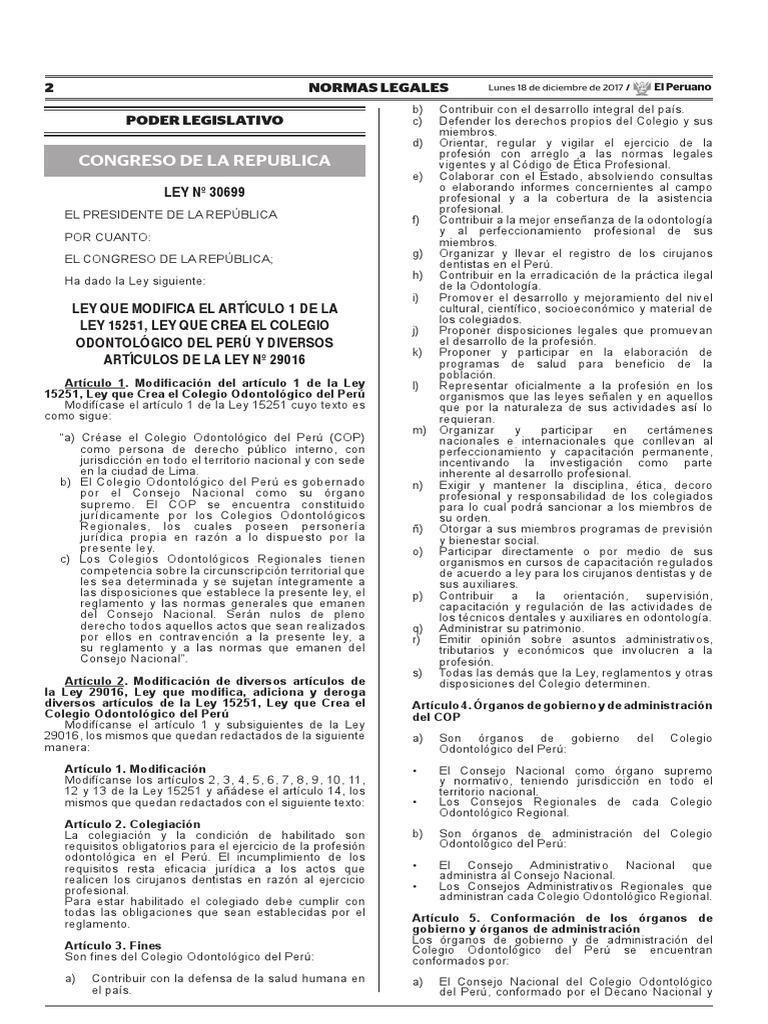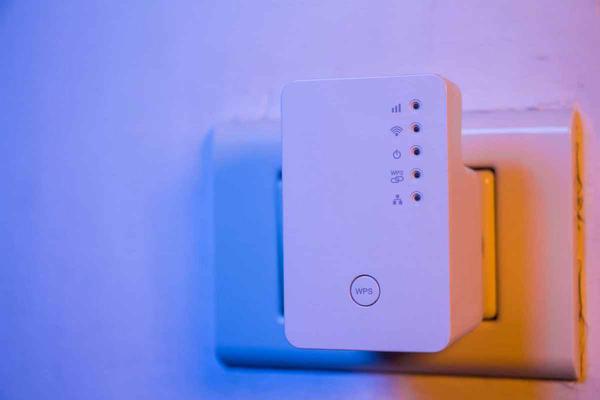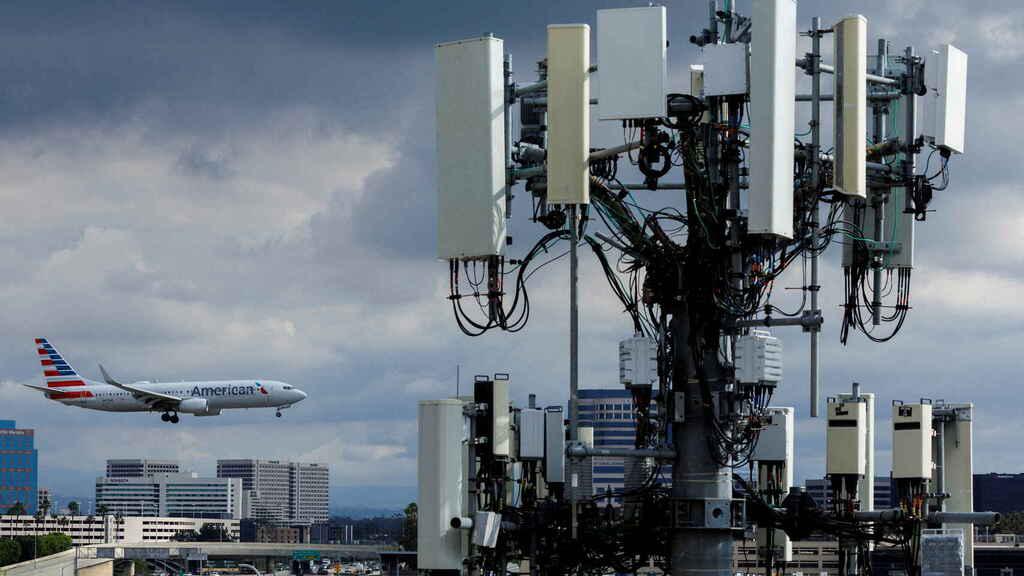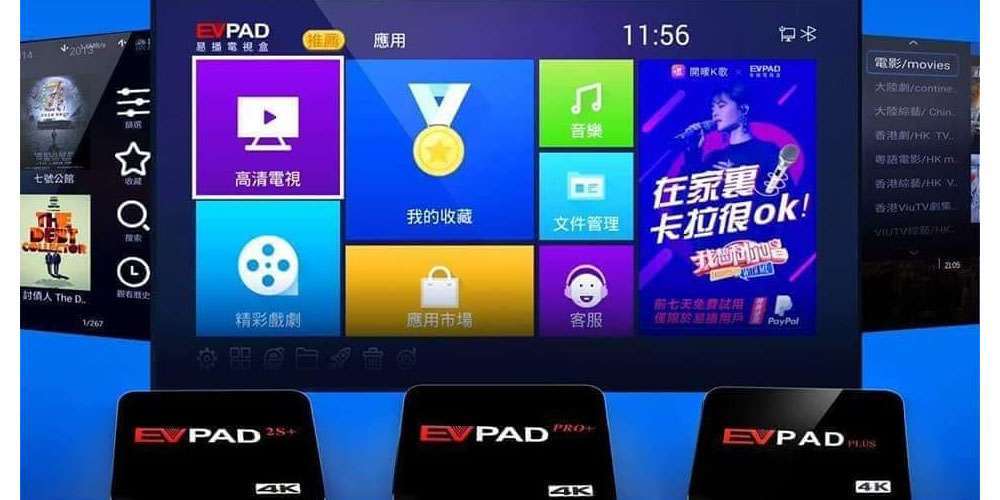AVM FRITZ!Box 4060: Tri-band WIFi 6 router and 2.5G port review
This router has compatibility with FRITZ! Mesh, this means that we can configure a complete high-performance WiFi Mesh network. The FRITZ!OS operating system has the 802.11k/v standards for WiFi roaming, this allows us to go from the router to the WiFi repeaters and vice versa, without cutting the wireless connection. We also have Smart Connect with band-steering, this allows us to have a single SSID shared with the three frequency bands, and for the router to place us in the best frequency band depending on the coverage received by the client, number of connected clients to a frequency band and other internal parameters.
This equipment has WPA2-Personal or WPA2/WPA3-Personal security, we also have the "Connect / WPS" button that will allow us to connect both WiFi clients and the manufacturer's WiFi repeaters, if we use this button they will automatically be added to the Mesh network of the manufacturer and will start working together.
Wired and USB Features
This FRITZ! Box 4060 router has a 2.5G Multigigabit Ethernet port for the Internet WAN, thanks to this port we can make the most of FTTH connections of 1Gbps or higher. This model is compatible with all operators, the FRITZ!OS firmware allows you to configure PPPoE, DHCP client, static IP, configure the VLAN ID in the Internet WAN for FTTH operators, and we can even use this router as a WiFi access point to connect it to our operator's router.
AVM has called the WiFi access point mode function “Internet router as IP client“, and this will allow us to connect this FRITZ!Box via cable to our operator's router, and take advantage of the WiFi functionalities, Gigabit ports and Multigigabit port and even the high-performance USB 3.0 port that this router incorporates. This configuration mode is the one you should use if the operator's router does not allow you to configure it in bridge mode, and you do not want to have problems with double NAT.
It also has a total of three Gigabit Ethernet ports for the LAN to provide up to 1 Gbps of speed to the connected equipment, in addition, we can connect several computers via cable.
This equipment has a high-performance USB 3.0 port on the back of the router, thanks to the FRITZ! OS operating system we can make use of Samba, FTP, FTPES, DLNA media servers and even connect a 3G/4G modem to provide the internet connection.
Other features
In this case, the FRITZ!Box 4060 does not have a TAE/RJ-11 port to connect analog telephones, but it does have a DECT base that will allow us to connect up to 6 FRITZ!Fon cordless telephones or those of other manufacturers. In addition, in this DECT base we will be able to connect different FRITZ!DECT home automation devices, whether they are the FRITZ!DECT 100, 200 or 210, in this way, we will be able to have programmable smart plugs easily and quickly, and all this through DECT connectivity, without the need to use the main WiFi network.
With a DECT base with telephony, the FRITZ!OS operating system has all the usual options for IP telephony. We have answering machine, fax, call forwarding, phone device management, and a host of advanced configuration options. The good thing about the FRITZ!Box IP PBX is that it is very easy to configure, and most of the configuration options are very well explained.
FRITZ!OS Firmware
This new FRITZ!Box 4060 router has the FRITZ!OS operating system with all the usual functions. We are going to be able to configure the Internet connection with great versatility, because it is compatible with any operator by having a 2.5G Multigigabit Ethernet port, if you have an operator that uses cable modem, modem and even ONT for FTTH connections, you can use this model as main router. In case the operator has provided you with a router, if you can configure it in bridge mode you will also be able to configure it without any problem, and in case it does not allow bridge mode, you will be able to configure this router in «point WiFi access” with all features except router (no NAT, DHCP server, QoS and other features).
In the WiFi part, this router is really advanced, we will be able to individually configure the three frequency bands with different SSIDs (but the same password), in this way, we will be able to differentiate the WiFi frequency bands. We will also be able to configure the high-performance Mesh network, configure VPN servers using IPsec, the possibility of configuring QoS, parental control, functions to manage the local network in an advanced way, and many more configuration options.
Once we know its technical characteristics of this new router, we go with the external analysis of the equipment so that you can see how it is.
External analysis
This new AVM FRITZ! Box 4060 WiFi router comes in a small blue box, the typical box and colors of the AVM manufacturer in its new routers. On the front of the box we can find the exact model of the equipment, the AVM FRITZ! Box 4060, we will also see that we have a Multigigabit port for the WAN and Gigabit LAN ports, the WiFi 6 that this equipment incorporates is one of the novelties, in addition, it does it with simultaneous triple band AX6000, so we are going to have a very high wireless speed, in addition, it supports FRITZ! Mesh to form a complete mesh WiFi network. Lastly, we have DECT technology to connect cordless phones and also Smart Home devices.
On the back of the box we will find the main features in the different languages, which also includes Spanish. In this area we can see that this router is very powerful, its technical specifications, and that it incorporates a high-performance USB 3.0 port, in addition to the wireless and wired features that we have already explained to you previously.
On the right side of the box we can find the FRITZ! Mesh logo, and this equipment is compatible with WiFi Mesh to form a mesh network and have both WiFi roaming and band-steering, with the aim of providing the best wireless performance to WiFi clients, and the best user experience because the connection will never drop. On the left side of the box we can find the serial number and CWMP account, as well as a notice indicating that WiFi speeds are theoretical, and that in real life we will get less performance (something logical and that always happens).
Inside the box of this router we will find the documentation and the different accessories, the content of the box is as follows:
In the following gallery you can see the inside of the box and its contents:
The quick installation guide included in the AVM FRITZ!Box 4060 is available in several languages, including Spanish. This guide will show us the contents of the box, how to connect the power and data cable, as well as how to synchronize cordless phones with DECT and also enter the configuration menu via the device's web to carry out the configuration wizard and access its firmware. .
In the AVM card with the access data, the first thing we will see will be the legend of each and every one of the equipment status LEDs, as well as the only physical button it has, the “Connect / WPS” button to synchronize equipment via WiFi, and also to add different AVM devices to the Mesh network. In this card we will also see the data of SSID and default password of the equipment, as well as its access password.
We will also have a small brochure with each and every one of the AVM manufacturer's products, we will be able to see their FRITZ!Box routers, FRITZ!Fon telephones, FRITZ!Repeater WiFi repeaters and the rest of the manufacturer's equipment. Finally, we can see the documents related to the product warranty.
The built-in network cable is Cat5e with four pairs of wires, so we can achieve a speed of 2.5Gbps without any problem. We also have the 12V and 2.5A current transformer, to provide a power of up to 30W and power all the internal components of the router and the device that we connect to the USB 3.0 port.
This AVM FRITZ! Box 4060 router is a very different device from other models such as the FRITZ! Box 7530 or 7590. This device is placed vertically since it has a base at the bottom to place it in this way. On the front we will find the FRITZ!Box logo and also the different status LEDs, such as Info, telephone (Fon), WiFi (WLAN) and also the equipment power LED and Internet connection. Finally, we will find the LED and physical “Connect/WPS” button, which will allow us to easily add wireless equipment to the local network.
On the right and left side of the router we do not find any connection or button, although at the top and bottom we can see some small ventilation grilles to properly cool the router.
In the back of the router is where we have all the equipment connections. At the top we have the QR code for WiFi access with a smartphone easily and quickly. Just below we find the high-performance USB 3.0 port, which will provide us with a very good read and write speed. Next, we will find the three Gigabit Ethernet ports for the LAN, a 2.5G Multigigabit port for the WAN/LAN, and finally the power connector of the router.
As you have seen, this router incorporates everything necessary to become one of the best and most versatile routers that we have tested to date from the manufacturer AVM.
In the lower part of the router we will find the base, with its corresponding rubber pads to prevent the router from sliding on a flat surface, as well as a sticker with the exact model of the equipment, the SSID and the default password, as well as the password of access to team management. We will also be able to see the input electrical characteristics, the CWMP account and even the serial number.
As you have seen, this AVM FRITZ!Box 4060 router has a very good design with a very elegant glossy white color, although the most important thing is inside with the powerful hardware that it incorporates, and with a really FRITZ!OS firmware. complete. Once we know what this WiFi 6 router is like, we are going to go to the test lab to check the real performance that it is capable of providing us.
Test laboratory
The test laboratory, like all the previous ones, will be LAN-LAN, LAN-WAN tests, WiFi tests and also with the high-performance USB 3.0 port that this router incorporates. You have more information about the tests we carry out and the hardware used in our test bench, if it is the first time you see an analysis of ours, we recommend that you read it to know how we obtain all the values. Here is the evidence and our conclusions.
LAN-LAN tests
In these LAN tests we will use JPerf to see how it behaves with multiple threads on the local network. This test will tell us if this router is saturated when we are going to transfer multiple files on the local network, or if everything is going to go very smoothly and we are not going to have problems.
With 100 concurrent TCP threads we obtain a transfer speed of 112MB/s, an excellent result, superior to other top-of-the-range routers from other manufacturers.
With 250 threads we obtain a speed of 104MB/s, a performance that is still perfect, with this router you will not have problems when making intensive use of the local network.
With 500 threads we get a speed of 87.6MB/s, a remarkable performance, but we expected to go up to 100MB/s without problems.
With 750 threads we obtain a speed of 87.3MB/s, a performance similar to the previous one, in this case by increasing the number of TCP connections the result is better.
With 1000 threads we get a speed of 34.9MB/s, a sufficient performance, although in real life we will never reach this level of traffic on the local network.
In the following table you can see the values we have obtained with different numbers of threads:
| LAN-LAN wires | 100 | 250 | 500 | 750 | 1000 |
|---|---|---|---|---|---|
| AVM FRITZBox 4060 | 112MB/s | 104MB/s | 87.6MB/s | 87.3MB/s | 34.9MB/s |
LAN-LAN Conclusions
The performance of this new FRITZ! Box 4060 router has been globally remarkable. In the first tests the performance has been outstanding, but later from 500 TCP threads the performance has been remarkable. Although it is really difficult for us to reach this level of network traffic in a domestic environment, the test of 1,000 TCP threads has only been enough. We believe that the manufacturer has room for improvement with its FRITZ!OS, because other routers from this same manufacturer have behaved clearly better than this model, however, the performance is remarkable.
LAN-WAN tests
In this test we will simulate how it will behave with P2P programs, since we will connect multiple threads from the LAN to the WAN. As we told you before, this router has hardware NAT, and its firmware implements this feature, so we expect great performance in this test.
With 100 threads we get a speed of 112 MB/s, an excellent performance. With this router we will not have problems if we use P2P programs and we have a large Internet bandwidth.
With 250 threads we obtain a speed of 109 MB/s, a speed that is also excellent, even so we can squeeze 1Gbps connections without any problem.
With 500 threads we obtain a speed of 96.4 MB/s, an outstanding speed, although we did not reach 100MB/s, we will be able to continue enjoying ultra-fast connections of 1Gbps or symmetrical 600Mbps without problems.
With 750 threads we obtain a speed of 82.6 MB/s, a remarkable performance, although we will be able to continue squeezing symmetrical 600Mbps Internet connections without problems, but we will be at the limit.
With 1000 threads we obtain a speed of 82.2 MB/s, the performance in this case is also remarkable, it has passed the test of 1,000 TCP threads remarkably.
In the following table you can see the values we have obtained with different numbers of threads:
| LAN-WAN wires | 100 | 250 | 500 | 750 | 1000 |
|---|---|---|---|---|---|
| AVM FRITZBox 4060 | 112MB/s | 109MB/s | 96.4MB/s | 82.6MB/s | 82.2MB/s |
LAN-WAN Conclusions
The overall performance obtained by this router in the LAN-WAN test has been outstanding, we have obtained a very good performance in all the tests, and in the worst case we have exceeded 82MB/s speed, making it suitable for high FTTH speeds in our home, and we will not have problems with high network traffic. This team has behaved really well in this test, so if you are going to use P2P intensively, the performance it will provide you will be outstanding.
WiFi 6 tests with the FRITZ!Box 4060
It's time to check the wireless performance, both in terms of coverage and WiFi speed with this high-performance router. This model is WiFi 6 class AX6000 with triple band, so we have checked the wireless performance in each of the frequency bands, separately, to know how each of them behaves.
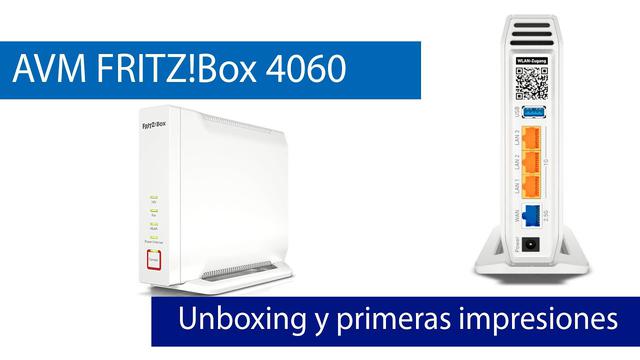
The physical stage of the tests is the same as always, as you can see here:
The iperf3 server is located on the local network in a NAS server connected via LAN, in this case the maximum speed that we can achieve is 1Gbps. We will not have any kind of bottleneck because the router does not support 160MHz of channel width, so the theoretical maximum speed that we will achieve is about 2.4Gbps, but in real life we will not exceed 1Gbps real speed. The WiFi card used is the Intel AX210 compatible with WiFi 6E, but this model does not incorporate this WiFi standard.
FRITZ!Box 4060: Test in the 2.4GHz band
In this 2.4GHz frequency band we can achieve up to 1,201Mbps in theory with this wireless router, as long as the WiFi card also has four antennas and is WiFi 6. Here are the results obtained with the iperf3 client-server with 20 concurrent TCP threads, and the Intel AX210 Wi-Fi card that we have tested with this router is AX3000 class, so at most we will get up to 574Mbps theoretical.
| AVM FRITZBox 4060 | Living room | Kitchen room | Main room | room 2 | Penthouse |
|---|---|---|---|---|---|
| Intel AX200 AX3000 | Sync: 542Mbps Speed: 40MB/s | Sync: 195Mbps Speed: 9.4MB/s | Sync: 195Mbps Speed: 13.0MB/s | Sync: 59Mbps Speed: 2.0MB/s | Sync: 34Mbps Speed: 1.4MB/s |
As you can see in the table above, this router is capable of providing a speed of over 300Mbps real in this frequency band, something that has impressed us due to the interference and how saturated this frequency band is. We must also indicate that it has behaved really well when we are very far from the router, both horizontally and vertically.
FRITZ!Box 4060: Test in the 5GHz band
Now let's check the wireless performance we get in the 5GHz band with low channels. In this frequency band we will be able to achieve a speed of up to 2,402Mbps if we have a WiFi card with four antennas, in our case with the Intel AX210 we will only achieve a maximum of 1201Mbps by having two antennas. This router does not support the 160MHz channel width to make the most of the wireless connection.
Here you have the results with the iperf3 client-server with 20 concurrent TCP threads, and using the Intel AX200 card.
| AVM FRITZBox 4060 | Living room | Kitchen room | Main room | room 2 | Penthouse |
|---|---|---|---|---|---|
| Intel AX200 AX3000 | Sync: 1200Mbps Speed: 88MB/s | Sync: 865Mbps Speed: 61.5MB/s | Sync: 432Mbps Speed: 37.5MB/s | Sync: 44Mbps Speed: 2.8MB/s | Without connection |
This router is capable of providing very good wireless coverage and also very good speed. Thanks to the Intel AX210 we have achieved a real 700Mbps of speed, so it is an excellent performance. In other more remote locations we have also achieved really good figures, so the speed you will get in most places in your house will be outstanding.
FRITZ!Box 4060: Test in the 5GHz-2 band
Now let's check the wireless performance we get in the 5GHz band with high channels. In this band we have the same theoretical speed as in the previous frequency band, in addition, we have used the same Intel AX210 WiFi card, so we will achieve a maximum of 1,201Mbps.
Here you have the results with the iperf3 client-server with 20 concurrent TCP threads, and using the Intel AX200 card.
| AVM FRITZBox 4060 | Living room | Kitchen room | Main room | room 2 | Penthouse |
|---|---|---|---|---|---|
| Intel AX200 AX3000 | Sync: 1200Mbps Speed: 90MB/s | Sync: 865Mbps Speed: 58.5MB/s | Sync: 272Mbps Speed: 21MB/s | Sync: 34Mbps Speed: 2.5MB/s | Without connection |
The behavior in this frequency band is similar to the previous one, in very close places it behaves somewhat better than the first 5GHz band, however, as we move away it behaves somewhat worse, so the behavior is completely normal with respect to to other similar models.
Wireless Conclusions
In the 2.4GHz band, this AVM FRITZ!Box 4060 router has performed outstandingly in all the locations where we have tested. The most remarkable thing is the real 320Mbps that we have achieved in the same room, but in the rest of the locations where we have tested this router it has also behaved really well, considering that we are talking about 2.4GHz with less bandwidth and more interference .
In the two 5GHz bands, it has behaved outstandingly, achieving speeds of over 700Mbps real, and that without using the 160MHz of channel width since it does not support it. In short and medium distances it has behaved really well, with a very good WiFi performance, although in remote places such as the attic we have not been able to connect, so we must take it into account if you intend to connect from very far in these frequency bands .
USB 3.0 tests
This router incorporates a USB 3.0 port and multiple services in the FRITZ! OS operating system to get the most out of it. In these tests we will check the performance of an SSD with a USB 3.2 Gen 2 enclosure to copy files larger than 4GB to check the read and write speed, the file system is Windows NTFS. We will carry out the measurements with the Samba server that the router incorporates, via FTP and FTPES.
Samba in USB 3.0 port
FTP on USB 3.0 port
FTPES on USB 3.0 port
DLNA on USB 3.0 port
The operation of the DLNA media server has been perfect due to the great hardware that this router incorporates, taking into account the previous tests, we assumed that the DLNA performance would be perfect.
Below is a comparison table:
| AVM FRITZBox 4060 | reading speed | Write speed |
|---|---|---|
| USB 3.0: SMB | 110MB/s | 85MB/s |
| USB 3.0: FTP | 113MB/s | 113MB/s |
| USB 3.0: FTPES | 14.6MB/s | 14.2MB/s |
USB 3.0 Conclusions
This FRITZ! Box 4060 router has performed excellently in the USB 3.0 performance tests, we have achieved a speed of over 100MB/s in reading both in reading and writing, so we are facing one of the best routers in this area. They only achieve this level of transfer because the main processor is really powerful, and because the firmware is highly optimized.
Something that we would like to highlight is the great speed that we have achieved via FTPES, we must bear in mind that this protocol uses TLS 1.3 for the control connection and AES-256-GCM for the data connection, so everything will be encrypted and authenticated . Thanks to the FRITZ!OS configuration we will be able to transfer data over the Internet with security and privacy, in addition, the speed is perfect.
The behavior of this router in the USB 3.0 tests has been simply perfect, one of the best routers in this aspect.
Once we know everything that this FRITZ! Box 4060 router is capable of, we are going to see the configuration wizard and also the firmware incorporated in this router.
FRITZ!OS Setup Wizard
To access the configuration wizard of this FRITZ!Box 4060 router we have to enter the address http://fritz.box or with the default private IP address which is http://192.168.178.1. Once we enter, it will ask us to choose the language of the configuration wizard and also of the firmware.
Next, we have to enter the password to access the administration, we will have this password both on the card with WiFi data and on the sticker that is under the router on the base. Once the key has been entered, we will choose our country, which is Spain, and click on Next. The router will now reboot to apply the changes.
When we return from the restart, it will ask us again for the access password, and it will only ask us if we want to enable the diagnostic and maintenance function of the router. On this occasion we do not have any wizard for connecting to the Internet, because by default it will be configured in cablemodem mode to obtain the IP via DHCP automatically.
Once we have seen what the configuration wizard of this FRITZ! Box 4060 router is like, we are going to see what the firmware of this new router is like, we anticipate that we will have the same options as always, nothing has changed, except the modes of Internet connection that we have in the “Access data” section.
FRITZ!OS Firmware
This new router has the same FRITZ!OS firmware as always, in this case, the latest version is FRITZ!OS 7.29 with all the improvements in security and operation from the manufacturer AVM. In the main menu we can see the general view of the router, the status of the Internet connection, if we have configured the telephony, the different physical interfaces of the equipment, as well as a list of the last calls, the equipment connected to the local network ( whether wired or wireless), the status of the answering machine and also other services of the router.
From this main menu we can access all parts of the router configuration, including the FRITZ!NAS part if we have a USB hard drive, and even MyFRITZ! from the top right menu.
Now we are going to show you all the configuration menus of this router, however, if you have already seen our FRITZ!Box router reviews before, you will see that all the menus are exactly the same as always, there are very few differences with respect to to other models.
Internet
In this menu we will be able to see the state of our Internet connection and monitor it, we will be able to see graphs of the download and upload channel, as well as the IP address in the WAN that this equipment has. We can also see the transmitted and received data counter, as well as configure it in case we want to cut the connection if we go over a certain limit.
In “Access data” we can configure the Internet connection, this is where we can define the mode of operation of the router, if we want to use it as a router or as a WiFi access point with USB and DECT functions. Depending on the profile used, we will have some services or others. If you want to use it in router mode, you must select any profile except the “Internet router as IP client”, the rest of the available options will be perfectly adapted to the operator in question. In case you need to configure the PPPoE and/or VLANs, you will have to choose the “DSL or fiber optic modem” configuration mode to do so.
We will also have everything related to the IPv6 standard, LISP, AVM services and DNS servers, an important detail is that this router supports DNS over TLS to protect DNS requests and responses, so all DNS queries will be encrypted point by point.
In «Filters» we can configure parental control, configure different access profiles and also activate the QoS incorporated in the router to prioritize packages or devices that we connect to the equipment. This router has exactly the same features as other AVM models.
In the “Allow access” section we will have everything related to opening ports, activating AVM services, configuring dynamic DNS to have a domain that points to our public IP address, and we will also have the IPsec VPN servers that we can configure. A very important detail is that if this router has a public IP, we will be able to access it remotely via HTTPS and also via FTPES, all with Let's Encrypt digital certificates, so we will have the best possible security for remote access. to the team.
In "MyFRITZ account!" It is where we will be able to register for the AVM service, and we will receive monthly connection statuses, firmware update notifications and we will also be able to locate the router on the Internet using reverse connections. It is highly recommended to activate this service, and it is completely free.
As you can see, the configuration options are the same as always, except in the "Access data" part where we will have more profiles than usual in an AVM router. This equipment will behave perfectly in AP mode, where we will have services such as USB and telephony, but we do not have NAT, port forwarding or QoS available among other options.
Telephony
In «Telephony» is where we will have all the configurations related to VoIP, in this case we do not have analog ports, we only have the DECT base to connect the different cordless phones to the router. What we do have are all the services such as the answering machine, agenda, alarm, fax, call management, DECT configuration itself and even call forwarding among other advanced functions.
The telephony part is as complete as ever, except that this time we don't have TAE/RJ-11 ports to connect analog phones, we can only connect phones via DECT.
Local network
In «Red Mesh» is where we can view, manage and administer the entire mesh network of the manufacturer. Here the different nodes of the Mesh network will appear, and also the different wired or wireless equipment that we have connected. Regarding the configuration options, we can configure the router as a Mesh base or Mesh repeater, in addition, we can also configure it so that the router acts as an IP client in the local network of another router (AP mode, but we still have Mesh).
In the “Network” section we can see the entire list of connected devices, in the case of seeing the AVM equipment, we can see the current firmware version and even update it from this menu. We will also be able to enter each computer to configure the fixed IP address, enable the opening of ports and more options that you all know. In this menu we can also add devices manually, and even delete all unused connections.
In the “Network configuration” menu we can establish the configuration mode, if router or IP client, in addition, we can activate guest access, LAN configuration, if we want to share applications on the local network and even UPnP , and also time synchronization and protection against DNS rebinding. Of course, we will be able to continue configuring the main local subnet with the address we want, as well as the guest subnet. Finally, we can create static routes in case we have a VPN server located on the LAN.
In «USB / Memory» we have everything related to USB services, such as the Samba server, FTP, FTPES and also the DLNA media server. Of course, we can also use a 3G/4G modem and even activate the Internet radio and podcast options if you use FRITZ!Fon phones.
In this case we have the same options as always, nothing has changed nor do we have any new options.
Wifi
In this section we can configure the three WiFi frequency bands separately, we have the same configuration options as always. If we leave the three bands with the same SSID we will have Smart Connect with band-steering, otherwise we will not have this functionality but we can force to connect to a specific band. También podremos configurar el acceso para invitados con diferentes opciones para permitir o no el acceso, e incluso podremos configurar el temporizador para encender o apagar la red inalámbrica WiFi.
En cuanto a seguridad, este router dispone de WPA2 o WPA2/WPA3, y para la parte de red WiFi de invitados con la red sin autenticación disponemos de OWE para cifrar las comunicaciones de los clientes WiFi. Por supuesto, tendremos el protocolo WPS con el PIN y el botón, para sincronizar de manera fácil y rápida los diferentes dispositivos.
En la sección de canales podremos realizar un ajuste totalmente automático, o de forma algo más manual definiendo los canales para las diferentes bandas de frecuencias WiFi. También veremos el estado general de las interferencias en las diferentes bandas, la ocupación de los canales WiFi y otras muchas opciones para optimizar al máximo la red WiFi y obtener el mejor rendimiento posible.
Por último, tenemos la parte de repetidor Mesh, por si queremos repetir la señal WiFi de una base Mesh (router de AVM).
Tal y como podéis ver, la parte WiFi del router es realmente completa y no echamos de menos ninguna configuración.
Domotics
Todos los routers con base DECT incorporan una sección de domótica, la cual nos permitirá añadir y sincronizar los diferentes enchufes inteligentes, termostatos y otros dispositivos domóticos del fabricante AVM. En este menú es donde podremos gestionar el alta y la administración de todos los dispositivos, debemos tener en cuenta que los menús de gestión son muy intuitivos.
Al instalar un enchufe inteligente, podrás programar el encendido y apagado automático, ver el consumo en tiempo real y otros muchos aspectos de la instalación. Gracias a esta base DECT que incorpora, no necesitaremos conectar los enchufes inteligentes vía WiFi, y dejaremos «libre» la banda de frecuencias para conectar los clientes WiFi.
Diagnosis
En «Diagnóstico» tendremos el mismo test de siempre para comprobar que todo en el router FRITZ!Box está funcionando adecuadamente, esta herramienta está integrada en todos los routers del fabricante AVM, y nos permitirá saber si hay algún problema de seguridad o una configuración que deberíamos modificar porque no es recomendable tenerla de esa forma.
En la sección de «Seguridad» podremos ver el estado general de la seguridad del router, los puertos que tenemos abiertos, si tenemos conexiones VPN configuradas y otros parámetros que podrían ser un riesgo para la seguridad de la red. Conviene revisar de vez en cuando estos parámetros para evitar problemas.
System
En esta sección veremos el registro completo del router que se genera automáticamente, también podremos ver el monitor de energía para comprobar la energía eléctrica utilizada, el consumo de CPU y RAM del router, así como la temperatura del procesador principal. Otras opciones son las de configurar las notificaciones del router por email, e incluso también podremos dar de alta y dar de baja diferentes usuarios en el router que tendrán diferentes permisos.
Otras opciones que tenemos en esta sección son configurar el LED de info del router, apagar o encender los LEDs de estado e incluso bloquear los botones físicos si queremos. También podremos configurar la región e idioma, guardar, restaurar la configuración y resetear el router a valores de fábrica, y finalmente configurar la política de actualizaciones del router WiFi.
Una vez que ya hemos visto todo lo que tenemos en «Sistema», vamos a ver qué asistentes de configuración tenemos integrados en el router.
Attendees
Con el objetivo de facilitar a los usuarios la configuración del router, AVM dispone de una gran cantidad de asistentes de configuración paso a paso. Podremos ejecutar los siguientes asistentes de instalación:
Hasta aquí hemos llegado con nuestro análisis del router FRITZ!Box 4060, un equipo de gama alta con un hardware puntero y un firmware muy bien optimizado, tal y como os hemos demostrado en las pruebas de rendimiento. Ahora que ya conocemos cómo es el router, su rendimiento y las opciones de su firmware, vamos a ver los puntos fuertes, puntos débiles y las conclusiones finales de este router.
Strengths
Puntos débiles
Last conclusions
Este nuevo router FRITZ!Box 4060 es uno de los mejores equipos de AVM con el estándar WiFi 6. La incorporación de triple banda simultánea con WiFi 6 y de clase AX6000 significa que podremos conectar una gran cantidad de dispositivos WiFi sin problemas de ralentizaciones, además, con el puerto 2.5G Multigigabit podremos conectarlo a una ONT o un router ya existente y disfrutar de altas velocidades de Internet sin tener cuello de botella en la red cableada. Este modelo nos permitirá configurarlo en modo router y también como punto de acceso WiFi (conservando servicios de USB, telefonía con DECT y más).
El rendimiento LAN-LAN que hemos conseguido con este router ha sido notable, esta prueba ha sido donde el router peor se ha comportado, no obstante, conseguimos un muy buen rendimiento para no tener problemas en un escenario doméstico. Este equipo en cuanto a rendimiento LAN-WAN ha sido sobresaliente, consiguiendo pasar la prueba de los 1.000 hilos TCP sin ningún problema, no vas a tener problemas al utilizar programas P2P de forma intensiva.
Respecto a la cobertura y velocidad WiFi, ha sido sobresaliente en todas las bandas de frecuencias WiFi, destacando el gran rendimiento y cobertura de la banda de 2.4GHz, donde hemos conseguido una velocidad de hasta 320Mbps reales. En las dos bandas de frecuencias el rendimiento también ha sido sobresaliente, consiguiendo algo más de 700Mbps reales sin los 160MHz de ancho de canal, por lo que es una gran noticia. Lo único negativo es que la cobertura en estas bandas es algo inferior a otros modelos, en lugares muy alejados lo notaremos, porque nosotros no hemos podido conectarnos desde el ático.
La velocidad del puerto USB 3.0 con sistema de archivos NTFS ha sido perfecta, este modelo es capaz de proporcionarnos una velocidad de 113MB/s en lectura y escritura vía FTP, un rendimiento realmente impresionante. Además, la velocidad que hemos conseguido con el protocolo FTPES ha sido de 14,5MB/s, un rendimiento muy elevado porque todo el tráfico va cifrado con AES-256-GCM y el canal de control utiliza TLS 1.3. Debemos tener en cuenta que este router no tiene un procesador con AES-NI para acelerar el cifrado y descifrado por hardware.
Este FRITZ!Box 4060 incorpora el firmware FRITZ!OS 7.29 con las mismas opciones de configuración y servicios de siempre, en este caso nada ha cambiado respecto a otros modelos del fabricante. Lo único destacable es que podremos establecer la conexión a Internet de múltiples formas, e incluso configurarlo como punto de acceso WiFi con funciones de USB, telefonía etc. El firmware soporta FRITZ!Mesh, posibilidad de configurar la conexión a Internet con VLANs en la WAN, podemos configurar el puerto WAN 2.5G como LAN en caso necesario, y disponemos de muchos servicios para exprimir al máximo el USB y el hardware del router. Lo único que echamos de menos es que no tenemos VLAN por puerto ni tampoco tenemos la popular Triple VLAN de Movistar FTTH.
Por último, el precio de este router ronda los 220€, un precio acorde a sus especificaciones técnicas y con el rendimiento real que hemos conseguido con este equipo. Este modelo es ideal tanto para usarlo como router principal, como también en modo AP para conservar el router de nuestro operador.
AVM FRITZ!Box 7530 AXCómpralo enEUR169,00Nuestra valoración de este router Wi-Fi AVM FRITZ!Box 4060 después de probar su rendimiento a fondo, comprobar todas las opciones de su firmware FRITZ!OS 7.29, y el precio, es de 9/10.
Esperamos que os haya gustado el análisis, si tenéis alguna duda podéis ponernos un comentario y os responderemos encantados.

